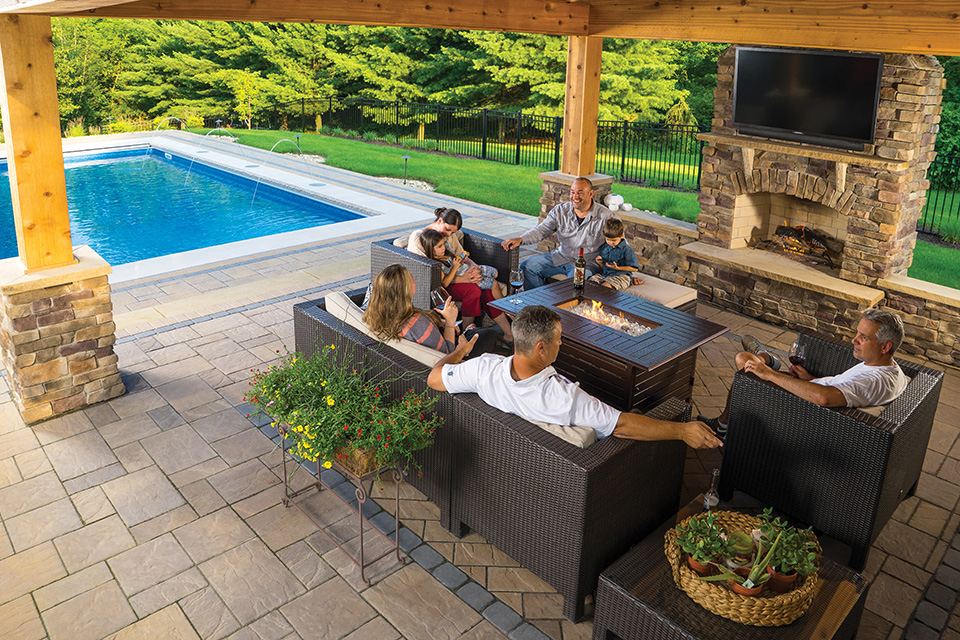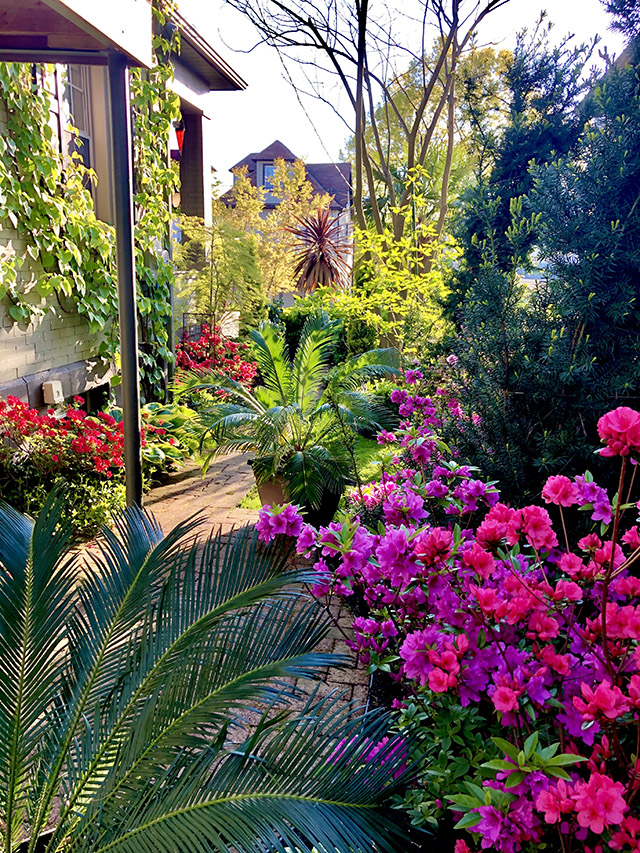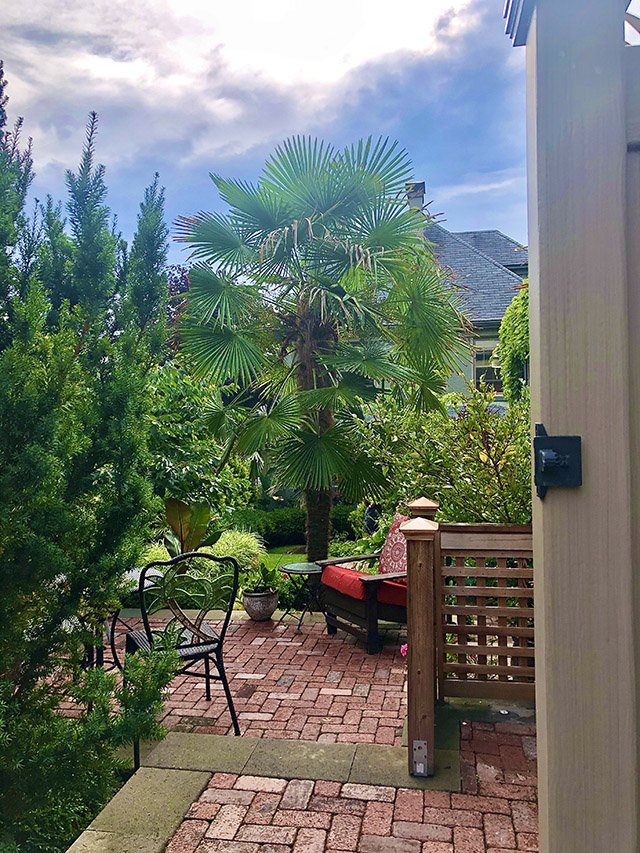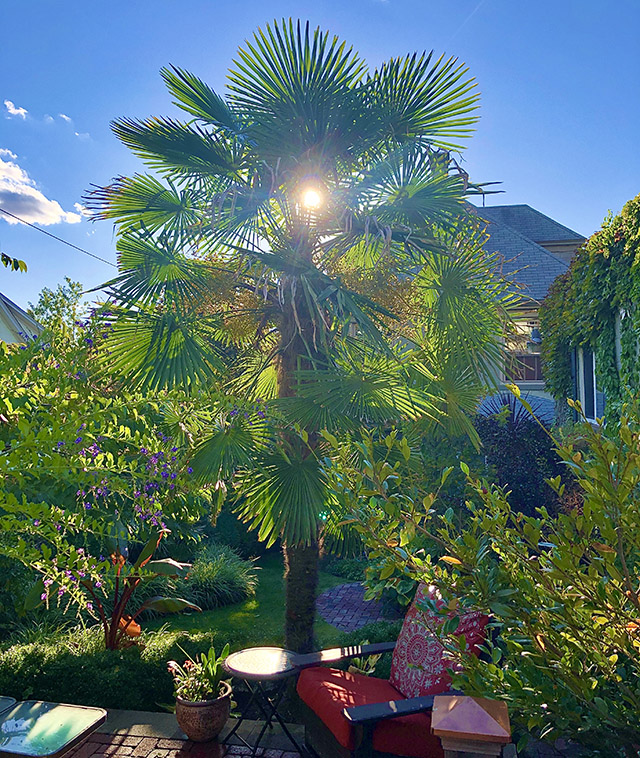As days lengthen and temperatures rise, it’s time to shake your home’s exterior out of winter hibernation and prepare for some long-awaited outdoor fun.
Let’s face it. The past winter felt like one of the region’s most grueling. In fact, it was one of the Pittsburgh area’s top 10 snowiest winters on record, according to the National Weather Service. But what made it feel especially taxing was the continued restrictions due to the COVID pandemic. With many kids not in school full time and parents often working from home, the spring of 2021 is being met with unprecedented enthusiasm.
On that first warmish day, it would be nice to head outdoors and find your home’s exterior and yard in perfect condition, ready to enjoy. But the cold truth is, there’s much work to be done. After persistent snowfalls and frigid temperatures wreaked havoc on a home’s exterior, spring cleaning is an arduous task, one that takes patience and planning.
The Year of the Yard
It’s no surprise, after last year’s initial COVID lock-down, that back yards, patios, decks, and porches got a lot of attention in 2020. Contractors saw an uptick in deck repairs and installations, and outdoor living spaces got increasingly extravagant with elaborate fire pits and fully-functional kitchens. What’s more, home gardening in the United States also hit an all-time high.
“So many folks are working from home and are unable to go out and socialize,” notes Trey Marks, organic gardener and owner of Plant Geek – a sustainable land care business servicing the Pittsburgh region. “People are investing more in their landscapes, wanting them to be a place that they can escape from their home office, as well as a place where they can gather with family or friends,” he says.
A new study by the International Casual Furnishings Association (ICFA) backs that up, predicting 2021 will be “the year of the yard.” Their survey shows people are doing more relaxing, grilling, gardening, exercising, dining, playing with pets and children, and entertaining outside. “In normal times, outdoor spaces are areas of recreation for ourselves and our families, yet today we need them for restoration for our bodies and minds,” says Jackie Hirschhaut, vice president of the American Home Furnishings Alliance and executive director of the ICFA. “At the beginning of 2020, we were focused on creating outdoor spaces that complement our homes and lifestyles,” Hirschhaut says. “Today we are creating outdoor spaces that supplement our sense of wellbeing and transform an outdoor area into an outdoor room.”
Vice president of Sales & Marketing at R.I. Lampus Company, Jere Bucek began to see outdoor living spaces getting more elaborate even before COVID. “We’ve been seeing swimming pools with built-in grottos, outdoor kitchens, and pavilions. The internet and social media certainly drive a lot of the creativity around these types of projects,” he says. R.I. Lampus, headquartered in Springdale, is the largest manufacturer of concrete block and hardscape products in Western Pennsylvania.
Kevin Prall, sales consultant at Eichenlaub, Inc. – a premier landscaping company serving customers throughout the region, suggests the focus on outdoor spaces is a result of a shift in spending. “Many families aren’t going on cruises, they are going on their patio,” he says. “Also, before COVID, many homeowners didn’t have the chance to look out the windows and really see their spaces. Some people left for work and got home when it was dark,” he points out. “Now they are seeing first-hand not just what they need to do, but what they want to do with their outdoor spaces.”
He says Eichenlaub is working on grand outdoor living rooms and kitchens, complete with plush seating, sinks, beer taps, wine refrigerators, smokers, barbecues, ice makers, ceiling fans and more. “We are installing a lot of water features, too, because people want to have that natural sound when they are enjoying their outdoor rooms,” Prall adds.
He admits he too is spending more time outside on his porch. “We are out there, napping, eating and working,” Prall says of his New Kensington home, which happens to be the winner of Better Homes & Gardens’ first-annual America’s Best Front Yard Contest in 2019. His lush tropics-inspired oasis is a traffic-stopper, with unexpected color and texture for this part of the country. “My love for landscaping isn’t just an occupation. I live and breath this stuff, almost like an obsession,” he laughs.
Prall points out that these days, his customers are home during the day more often and witness first-hand just what goes into maintaining their landscape. “Now more than ever, they can see our crews, and appreciate the hard work that makes their space nice. They can see the value of our expertise,” he says.
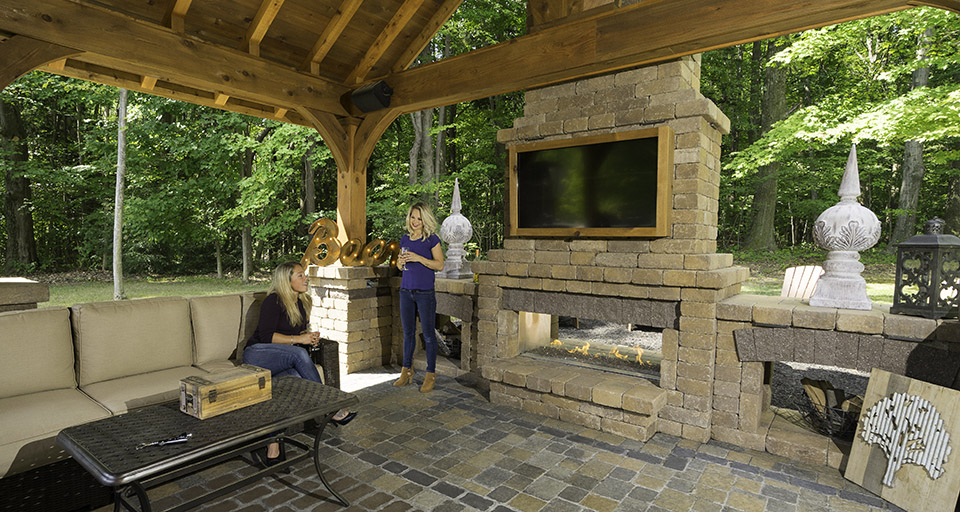
All About the Timing
Whether you hire a landscaper or like to do it yourself, proper spring cleaning is all about the timing. Because of this region’s unpredictable weather, professionals warn of starting the process too early. “It can be exciting when the sun starts to shine, and the days get a bit longer. But in this area, we are susceptible to late spring cold snaps and frosts,” says Nicole Nelson, co-owner of Garden Hose Landscape & Living Designs, based in the North Hills.
“It’s important to remember that beneficial critters and pollinators make their winter homes in the fallen leaves and small hollowed sticks that our yard and beds harbor.” She suggests waiting until the weather is consistently 50 degrees before the real spring cleaning begins. “This gives the critters a chance to emerge and start their job pollinating the spring flowers.
Experts who caution against cleaning too hastily say there are plenty of other exterior projects that can be tackled in the season’s early weeks, when temperatures tend to rise and fall unpredictably. “Take this time to walk around your property and look for any signs of damage,” suggest TJ Swickrath, owner of Pittsburgh ProClean. One place to start is gutters. Snow, wind, and small animals cause sticks, leaves, and other organic matter to accumulate and clogged downspouts means water can overflow around the perimeter of your house. “This is probably the most important service we offer,” Swickrath says. “Water can cause a number of different issues from foundation damage and structural issues to basement flooding or mold.”
Now is also a good time to inspect siding, fencing, and decks. “If you have a wooden deck, look for any decay and assess if it’s time to re-stain or paint,” Swickrath continues. He suggests power-washing any siding and fencing to remove dirt, mildew, and moss that can cause issues over time. “And don’t forget about concrete surfaces like driveways and patios. Concrete is durable, but it’s porous. Cleaning regularly gets rid of organic stains that can cause cracks.”
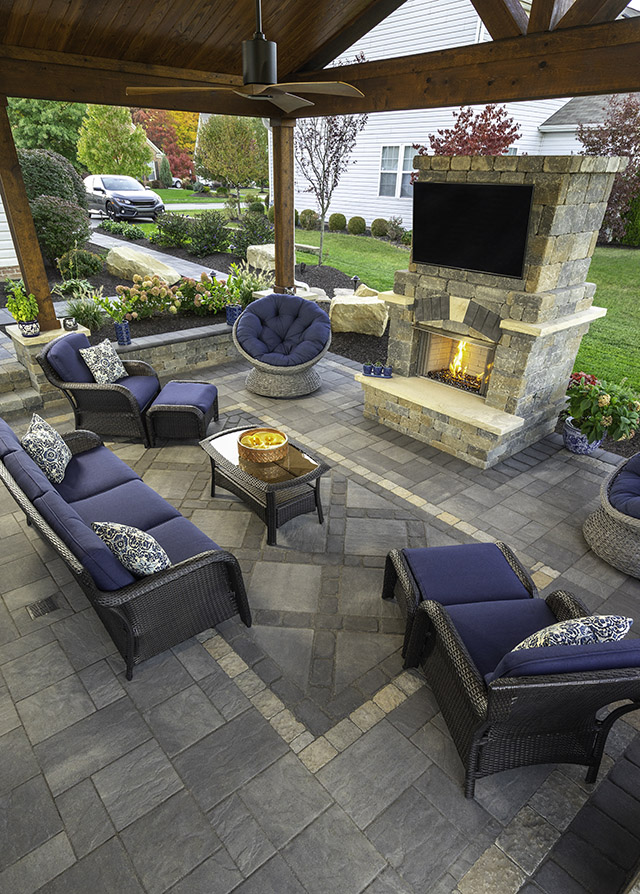
Bucek says their hardscape products hold up to the region’s winters, but adds that regular cleaning and occasional sealing will go a long way to preserve the investment. “One should consider using penetrating sealers when installing concrete products in general, as this helps to prevent any issues down the road,” he recommends.
Love your Lawn
The long-awaited arrival of consistent warmer weather means it is time to clear the yard of all the debris and look for areas that need attention. “A good first cleanup of the entire property is the key to starting the landscape season off on the right foot,” says Fox Chapel based landscaper Tyler Zacharias.
“Once you clear the yard, I suggest scratching the bare spots with a rake and adding topsoil. We use a mushroom manure compost as a way to germinate the grass,” he adds. Another tip he offers is to mow early, and mow often. “You don’t want to take more than one third of the grass length off or else is will put the grass in shock. So, you don’t want to let it get too long and fall behind.”
Most experts say you should have your first cut complete before you fertilize and that a pre-emergent should be applied early in the spring to maintain the health of the grass and the soil. “Spring pre-emergent treatments are herbicides that prevent weeds from growing in your lawn. As their name implies, you need to apply herbicides before weeds like crabgrass, spurge, and clover emerge in the spring, otherwise they will not be as effective and weeds may still grow,” Nelson explains.
“As the ground heats up and weeds begin to germinate, the weeds will hit the pre-emergent barrier in the soil and die,” she says. “Some pre-emergents will treat a broad spectrum of different types of weeds and some will only treat one or two. If you do not know what type of weeds will grow on your lawn, an herbicide labeled for a broad range of weeds is a smart choice. Be sure to have any weeds that do appear in your lawn during the spring and summer identified so you will know what type of weeds to target the following year,” she adds.
Time for Beds
With the lawn under control, homeowners can focus on what many consider the pride-and-joy of their landscaping – their flower beds and gardens. With so many variables, this part of spring cleaning takes a bit more thought and planning. The first step, though, is to start with pruning. “It prevents so many problems,” Marks says. “But it depends on the type of tree or shrub – not all of them should be pruned in the winter or early spring.” Nelson agrees. “It’s important to not trim early spring bloomers. Perennials and shrubs that bloom in the spring have likely already set their buds, and if you prune them now, they likely won’t bloom this year.”
When it comes to clearing the leaves from beds, Penn State Master Gardner Carol Papas prefers to rake rather than using a power blower. “Anything that has been decomposing feeds the soil, so if you blow off all the mulch and decayed leaves, you are losing a lot of the microbes and compost that’s laying on top of the soil. A blower just does too thorough of a job by blowing off the good stuff along with the bad, in my opinion,” she says.
Papas also says the ritual of spreading large amounts of bark mulch in every bed should be a thing of the past. “If you have trees and shrubs, and want it to look tidy, mulch is fine. But resist the urge to put bark where you plan to grow perennials and annuals. It can inhibit growth, so it’s better to put a couple of inches of compost and mushroom manure.”
For new garden beds especially, choosing the right plants and flowers takes planning. “I encourage people to really educate themselves. Don’t just assume that what’s in stock at a big box store is good for your landscape,” Papas says. “Do your homework. A lot of plants that are readily available are invasive, for example, or attractive to deer, so know what you are getting into.” She suggests talking with knowledgeable staff at garden centers who can help select flowers and plants that will thrive in the available conditions.
One way to learn a lot more about those conditions is soil testing. “Before we do any work, we get soil tested through Penn State University,” Prall explains. “It’s the best way to know exactly what we are dealing with.” The tests show the quantity of available nutrients and determines the amount of fertilizer that is recommended. “Why put a high-nitrogen fertilizer if you already have a lot of it in your soil,” he offers as an example.
While it may seem like a lot of trouble, what with all the testing and timing, planning and pruning, the payoff is well worth it when families head outdoors to eat, entertain, exercise and play. But creating and maintaining outdoor spaces has never been so important, and never so popular. The IFCA study estimates that the landscaping market totals some $100 billion in the U.S., and that isn’t including the expenditures for lighting, heating, grills, outdoor kitchens and all the other elements that go into creating outdoor rooms. And during COVID, a whopping 78 percent of Americans have made outdoor upgrades, a number that is likely to continue rising as the pandemic has fundamentally changed people’s relationship with their outdoor spaces.
Nelson points out that creating a place to enjoy the outdoors doesn’t need to be grand or expensive. “We work hard to help our clients reach their landscape goals with any budget, because we believe gardening should be for anyone and everyone.” NH


